In September 2010, I last reported on the continuing saga of Tverberg v. Fillner Construction (Tverberg II). This Bulletin revisits the Tverberg case – – – the case that refuses to die, or now Tverberg IV!
In 2006, Fillner, a local company based in Rocklin, was engaged by another local company, Ramos Oil Co. to expand its fuel facility in Dixon. Fillner subcontracted with Lane Supply for the construction of a metal canopy over the fuel dispensers. Lane, in turn, subcontracted a portion of the work to Perry Construction, which hired Jeffrey Tverberg, as an independent contractor, holding his own contractor’s license, to supervise Perry’s construction crew. Fillner directed another subcontractor to dig eight four-foot deep holes for the installation of bollards (posts) near the canopy. Even though the bollards were unrelated to Perry’s work on the project, Tverberg asked Fillner to cover the holes for safety reasons. Fillner did not cover the holes in response to Tverberg’s request, and Tverberg himself, despite recognizing the danger, fell into one of the holes and was injured. Out of that injury, we have now had a trial court decision, two Court of Appeal decisions and one California Supreme Court decision, and the case continues on between the plaintiff and the insurance companies for the defendants.
The central issue is whether the general contractor can be liable to a lower level subcontractor who is injured on the job site.
In 2006, Tverberg, who again was a licensed independent contractor of Perry’s and not an employee of anyone (so this is not a worker’s compensation suit), sued Fillner, the general contractor, for damages that resulted from his personal injuries. Contractually, Lane and Perry were two subcontractors in the chain of contracts between Fillner and Tverberg, and Tverberg wanted to jump over those two contractual relationships and make Fillner directly liable to him for the injuries he suffered (making Fillner vicariously liable for Perry’s possible negligence). Fillner responded to the lawsuit by stating that it, as the general contractor with no contract with Tverberg, could not be held liable to Tverberg for the unsafe work of another subcontractor. The trial court agreed with Fillner, and rejected Tverberg’s claims, stating that, as an independent contractor and not an employee, Mr. Tverberg accepted the peculiar risk inherent in the work and had responsibility for his own safety. Tverberg appealed his case to the Court of Appeal, which, in 2008 in Tverberg I, disagreed with the trial court. The Court of Appeal held that “the peculiar risk theory” did not bar Mr. Tverberg’s claim because Tverberg, as a sole proprietor, could not purchase workers compensation insurance for his own injuries. As a result, said the Court of Appeal, the application of the peculiar risk defense would deny him compensation for the injuries caused by the negligence of others. Fillner appealed that adverse decision to the California Supreme Court.
In 2010, the Supreme Court in Tverberg II, overruled the Court of Appeal and held that (a) Tverberg accepted the peculiar risk of falling into open holes while working on the canopy and (b) Fillner could not be vicariously (indirectly) liable for Tverberg’s injuries if the risk of injury was inherent in the nature of the work under Tverberg’s control. The case was returned to the Court of Appeal to decide if Fillner was directly liable to Tverberg for maintaining an unsafe workplace.
In 2011, the Court of Appeal issued its ruling (Tverberg III) which held that for Tverberg’s direct unsafe premises liability claim against Fillner to succeed, Fillner must have affirmatively contributed to Tverberg’s injury by actively directing the manner, means and methods of performance of the work (digging and not covering the holes) in a way that contributed to the injury. The Court of Appeal cited three examples which could support Tverberg’s claim against Fillner: (1) Fillner directed another subcontractor to dig the holes in Tverberg’s work area; (2) Fillner affirmatively decided to not cover the holes with available trench plates; and (3) Fillner breached non-delegable regulatory duties that it owed Tverberg.*1* The Court of Appeal then returned the matter to the trial court with instructions that Tverberg could proceed against Fillner on the alternative theories that Fillner negligently exercised its retained control of the jobsite and that Fillner breached non-delegable regulatory duties owed to Tverberg.
However, before the case was retried in the trial court, in 2011, the California Supreme Court decided the SeaBright Insurance v. US Airways case. In SeaBright, an injured employee of an independent contractor sued the airline after he was injured by an allegedly unsafe conveyor belt that was operated and maintained by his employer. In spite of evidence that the equipment violated Cal-OSHA regulations, the Supreme Court held that it is the general rule (supported by public policy) that regulatory duties related to safety were in fact delegable to the independent contractor. The Court further ruled that delegated with the regulatory duties was liability for injury if an independent contractor or its employees are harmed. The Supreme Court then ordered the Court of Appeal to reconsider its 2011 Tverberg III decision in light of the SeaBright Insurance opinion.
The Court of Appeal complied and, in 2012, issued its Tverberg IV decision. The Court of Appeal held that when work is delegated to an independent contractor, the duty to provide a safe workplace is impliedly delegated to the independent contractor as well. Therefore, Fillner delegated the duty to comply with Cal-OSHA requirements to Lane, Perry and Tverberg, and, therefore, Tverberg could not sue Fillner on this theory because Lane, Perry and Tverberg himself were responsible for compliance.
An additional holding of the Tverberg IV decision addressed Tverberg’s claim of negligent exercise of retained control of the jobsite (i.e., Fillner’s direct liability to Tverberg). Tverberg contended that Fillner should be held liable for his injuries because Fillner retained control over the jobsite and negligently exercised that control. The Court held that this issue turns on whether Fillner affirmatively contributed to the injury by its retention of control of the jobsite. This liability can be established by evidence of Fillner’s direction that the work be performed in a particular manner or by a particular method. On the other hand, the Court held that Fillner’s passive allowance of an unsafe condition to occur or the failure to exercise retained control does not constitute an affirmative contribution. The Court identified three facts alleged in Tverberg’s case that could possibly illustrate Fillner’s affirmative contribution to Tverberg’s injury: (1) Fillner directed another subcontractor to dig the bollard holes in the first place and directed Tverberg to erect the canopy in the area of the holes; (2) Fillner made the determination that there was no need to cover or barricade the holes; and (3) Fillner twice failed to cover the holes after Tverberg requested they be covered. As a result, the Court ordered the case to be returned to the trial court one more time for further proceedings.
Lessons from Tverberg
The 2010 holding of the Supreme Court in Tverberg II clarifying and expanding the owner and general contractor protections against independent contractor claims for injury under the peculiar risk doctrine remain intact, and are very positive for the general contractor. In many ways, the Supreme Court opinion established a “bright line” test on that subject which can be used in drafting future conforming contract provisions. Most recently, however, Tverberg IV addresses an alternative means of establishing owner or general contractor liability for injuries suffered by a subcontractor (independent contractor). In its interpretation of the negligent exercise of retained control theory, the Court identifies two obvious factors and one not-so-obvious factor that could trigger liability. The owner or general contractor’s affirmative decision to employ a less effective safety measure or the failure to act following a request to employ safety measures can be evidence of the “affirmative contribution” to the independent contractor’s injury. Less obvious and probably more difficult to avoid is the Court’s identification of the owner or general contractor’s direction to other subcontractors to perform the work that ultimately caused the injury. The lesson to owners, construction managers, general contractors, and upper tier subcontractors is that directions given to one subcontractor cannot be made without consideration of the safety impact that it may have on other subcontractors.
It would be a safe bet to stand by for Tverberg V, and my next bulletin on this case!
1 The particular regulations were Cal-OSHA safety regulations relating to open holes and excavations.







